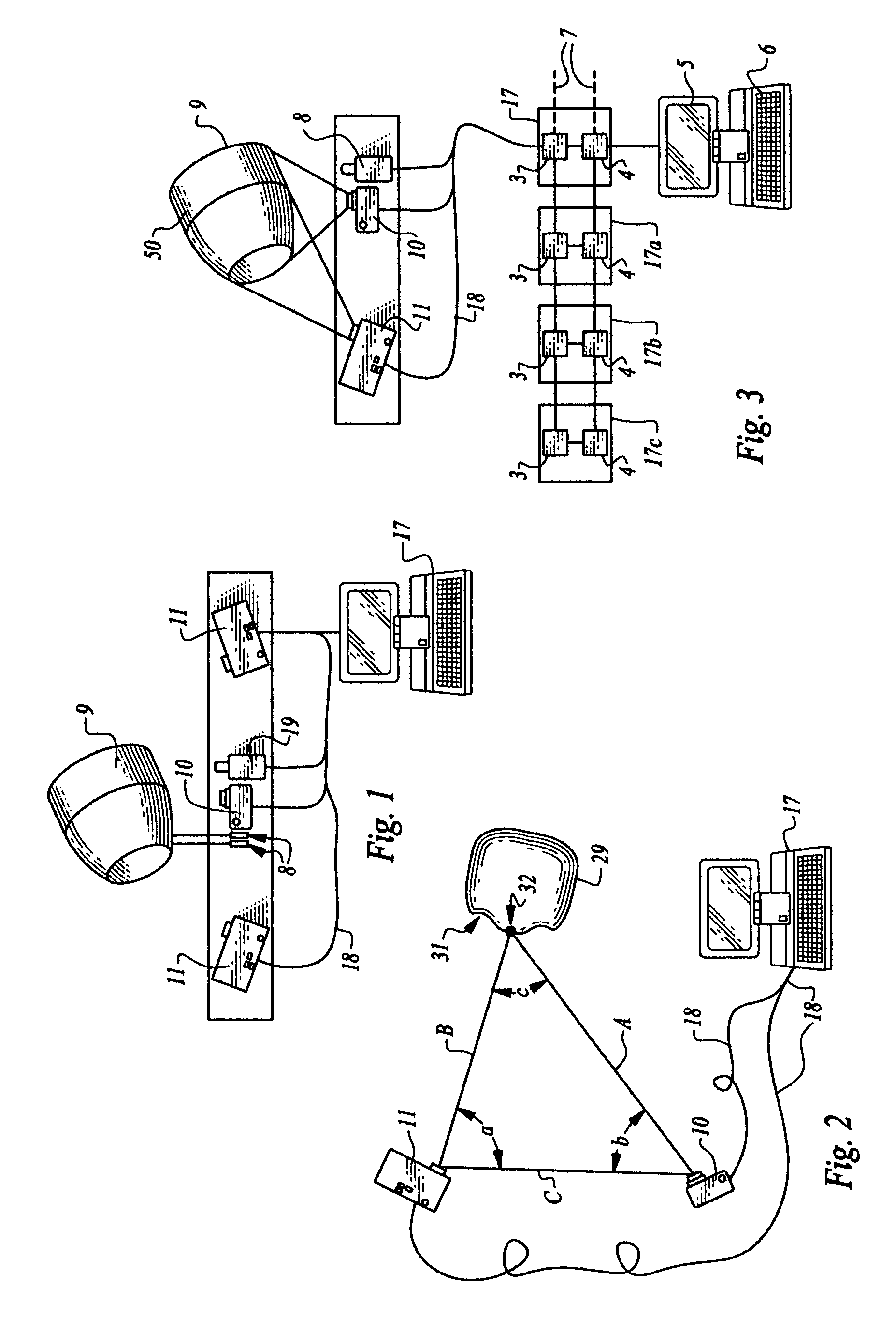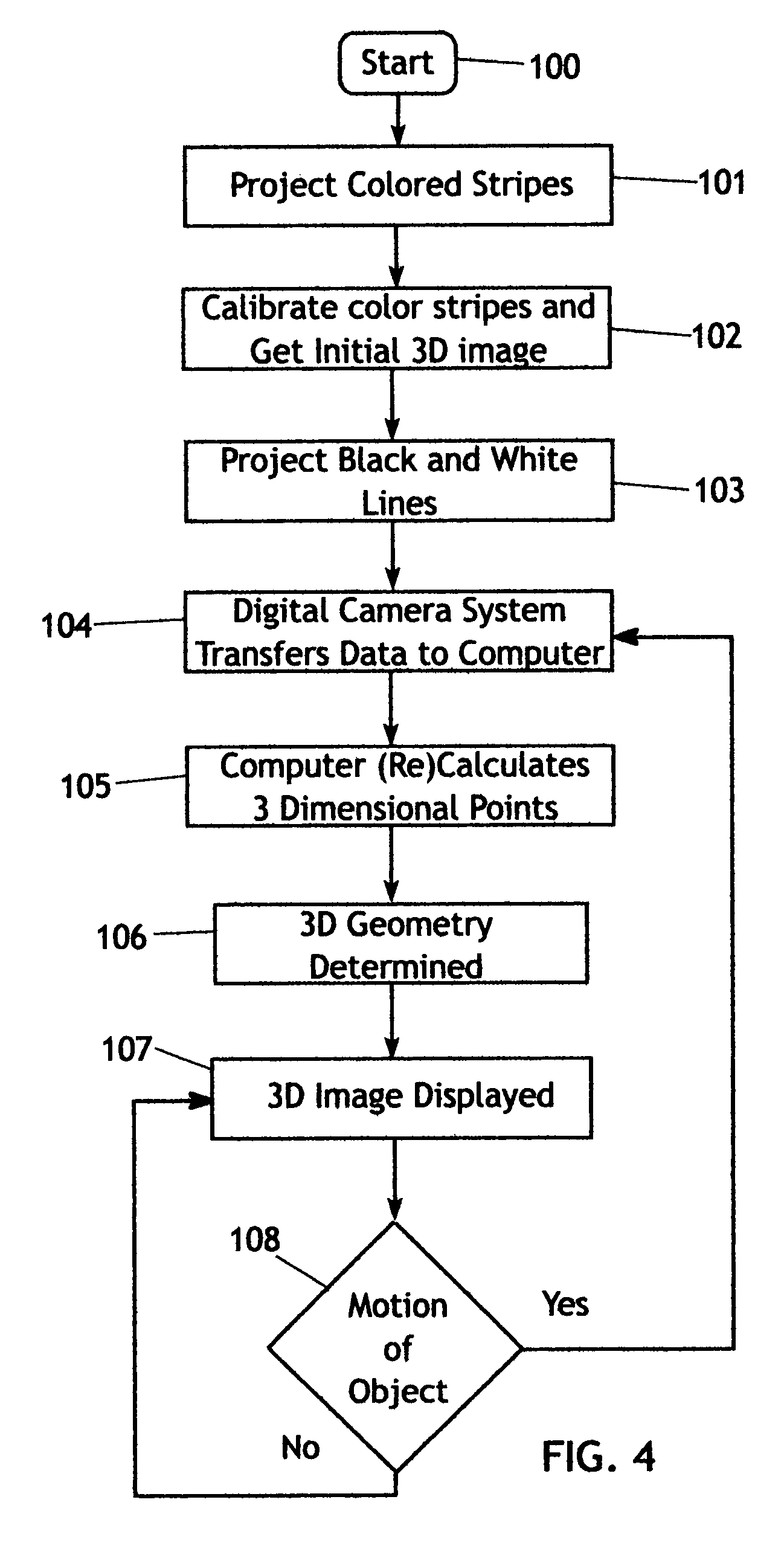Method and apparatus for dynamic space-time imaging system
a dynamic space-time imaging and apparatus technology, applied in the field of dynamic space-time imaging systems, can solve the problems of difficult to achieve stereoscopic profiling with accurate detailed measurements of three-dimensional objects, involving a quite expensive apparatus, and finite (and relatively long) time for all points to be illuminated and surveyed
- Summary
- Abstract
- Description
- Claims
- Application Information
AI Technical Summary
Benefits of technology
Problems solved by technology
Method used
Image
Examples
Embodiment Construction
ent invention applied to generating a dimensional map of the outer surface of a moving object.
[0028]FIG. 12 is a functional block diagram depicting the method of the present invention applied to generating a dimensional map of the human body for medical purposes.
[0029]FIG. 13 is a functional block diagram depicting the method of the present invention applied to generating a dimensional map of the human body and fashioning custom clothing from the map.
[0030]FIG. 14 is a functional block diagram depicting the method of the present invention applied to generating a dimensional map of an object and using automated machining to create from the map a copy of the object.
[0031]FIG. 15 is schematic layout of an interference filter that projects stripes of different colors toward an object undergoing dimensional mapping in accordance with this invention.
DETAILED DESCRIPTION OF THE INVENTION
[0032]The present invention generally comprises a method for generating a three dimensional map of the s...
PUM
 Login to View More
Login to View More Abstract
Description
Claims
Application Information
 Login to View More
Login to View More - R&D
- Intellectual Property
- Life Sciences
- Materials
- Tech Scout
- Unparalleled Data Quality
- Higher Quality Content
- 60% Fewer Hallucinations
Browse by: Latest US Patents, China's latest patents, Technical Efficacy Thesaurus, Application Domain, Technology Topic, Popular Technical Reports.
© 2025 PatSnap. All rights reserved.Legal|Privacy policy|Modern Slavery Act Transparency Statement|Sitemap|About US| Contact US: help@patsnap.com



